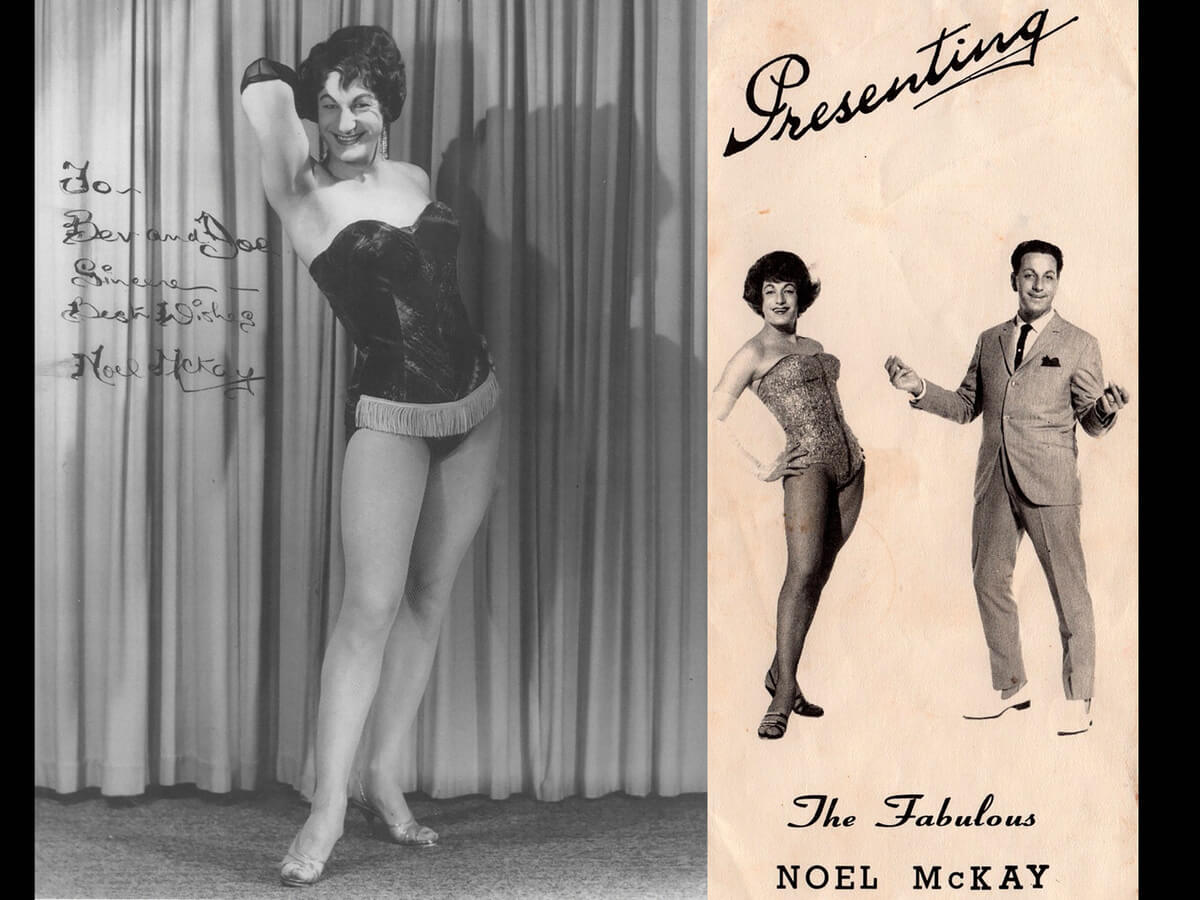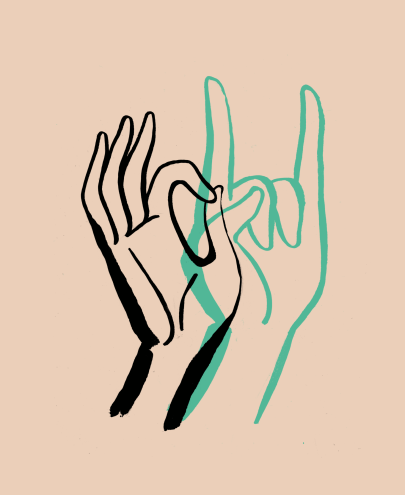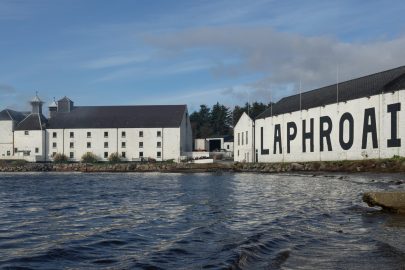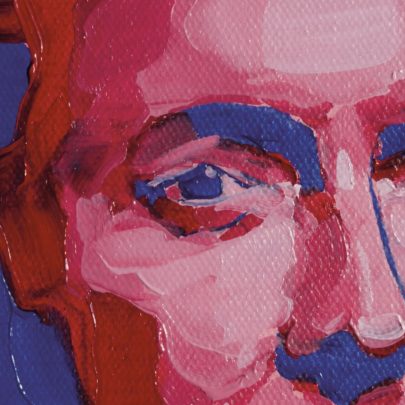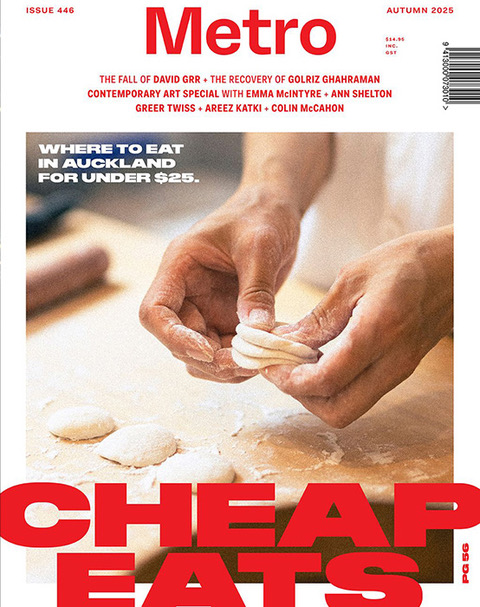Oct 14, 2019 People
How a double-jointed man dressed as a woman changed Auckland nightlife in the 1950s – and even helped inspire The Rocky Horror Picture Show’s Dr Frank–N-Furter.
God, you wouldn’t want to have lived in 1950s Auckland. It was dull, dark and frightening; a city so repressed and constrained that the only glimmer of hope was when Rock Around The Clock opened at the Regent Theatre. It was like lightening had struck Queen St and opened a chasm of hope for the future. The movie was banned for months as the censors pored over the implications of freeing up the spirits and bodies of young teens. This was a country where virginity was supposedly sacrosanct; where sex and sexuality was simply not discussed; where if you were not married by 21, there was something seriously wrong with you; where people were hung in Mount Eden Prison at 6am on a Friday and buried within the prison walls; where the lights in the city were turned off at midnight.
Queen St on a Friday night did show some energy when groups known as widgies and bodgies came in from the outer suburbs and paraded their flash new clothes in the two milk bars, but by 9pm they had roared off to somewhere distant like Mount Roskill or Henderson, the shops closed and the streets were deserted.
It wasn’t a place where fun existed. When it came to entertainment, you struggled to find a good band or nightclub outside of the Trades Hall on Hobson St on Saturday night or the Orange Ball Room in Newton Rd. Licensing laws were horrific and anyone caught selling booze after 6pm, when the pubs closed, was imprisoned or fined heavily. Often young women were asked to smuggle a bottle of gin or rum under their ball gowns into the Peter Pan at the top of Queen St for a 21st or wedding party.
But one act in this dark and dreary society was a spark of risqué fun. A man dressed as a woman, and a glorious one at that, was a dinner and nightclub sensation, a chance for an audience to think the unthinkable and enjoy the possibilities of pleasure and change. Neither the entertainer nor the audience quite understood what the future could bring, but Noel McKay was brave, bold and challenging, and just clever enough to pull it off.
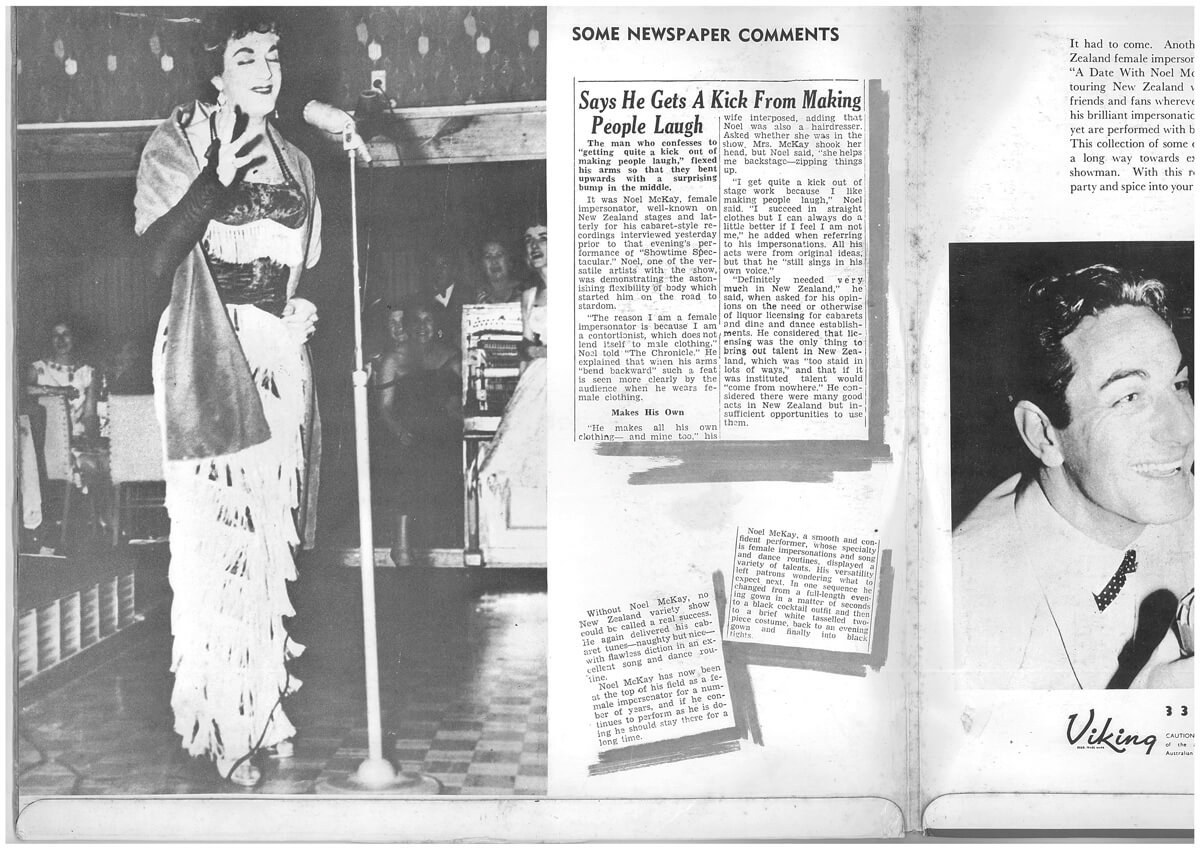
He emerged like a fabulous thunderbolt from behind velvet curtains at the Sapphire Room above the famed Gourmet Restaurant, where high-class diners sipped champagne, sherry, whisky and Pimms, and at the Montmarte in Lorne St next to the St James theatre, where if you were lucky you might get a puff of what we then knew as a reefer. McKay and his wife Tess would do five shows a night from 9pm through until 1am. They would drive the city streets in a Morris Oxford, the back seat packed with ball dresses and sequinned gowns and wigs, and enter up the back stairs to get ready for a 40-minute power-packed show of dirty ditties and extraordinary clean filth. This glamorous fishnet-stocking phenomenom and stage personality was a man without a stage name other than Mr Noel McKay.
I remember him well. Somehow I had got myself invited by the parents of rich girlfriends to a few upmarket events. On a Saturday night at the Gourmet or the Peter Pan, about 9pm, the lights would dim and the MC would come out in a single spotlight and say it is with great pleasure that tonight we present New Zealand’s finest entertainer Mr Noel McKay. The hushed audience would listen to a drumroll rising to a crescendo as the spotlight swung to a curtained stage entrance and through it would step Mr Noel McKay, resplendent in a glorious evening gown.
David Hartnell remembers McKay’s entrances as “breathtaking”. “The room belonged to Noel,” says Hartnell, patron of the New Zealand Variety Artists Club. Within seconds McKay would own the audience. His wife Tess, who was also his dresser and stagehand, would move to a piano and accompany his first song. They weren’t great musical moments, but they were enormous fun and McKay had a clever ear for the double entendre. He was often accompanied at the Colony Club and the Peter Pan by Bruce King and his bandmates.
Other entertainers of the day recall him as a knock-out performer, capable of handling any hecklers. When a farmer yelled out one night, “Where’s your dick?” McKay replied, “Up my arse.” And when a tipsy women once asked him, “Do you enjoy dressing up like a woman?” McKay replied sharply, “Not much, do you?”
McKay was born in Oamaru, a dull town he longed to escape from. From an early age, he was fascinated by the women’s magazines that his mother, a dressmaker, would have in piles on the sewing machine. He loved theatre and pantomime, and he hated school, though he did well at high school.
McKay was obsessed with the idea of coming to Auckland, which he did with his wife Tess, who he married at the age of 20.
Billy Farnell, the Liberace of New Zealand entertainment and owner of Shanghai Lil’s, recalled McKay’s wife helping him backstage, and the “simply stunning” stage clothes he wore. They had discovered this new fastening product called Velcro, so McKay’s outfits, beginning with a huge ball gown, could be ripped off in seconds ready for the next number.
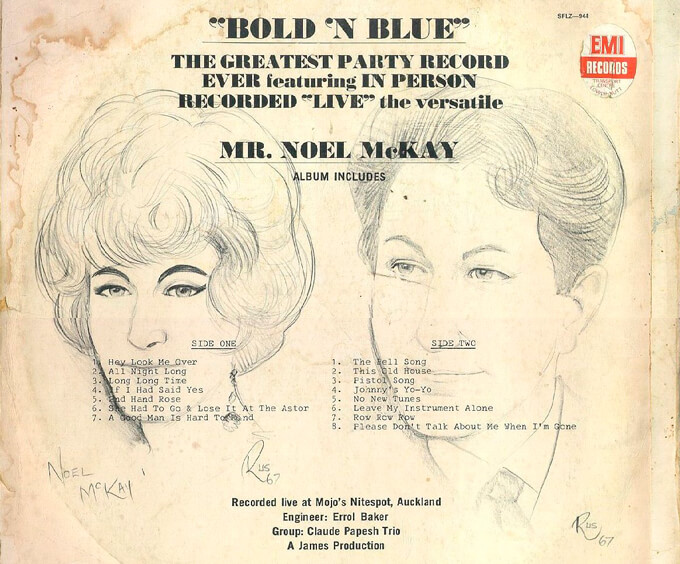
He had the most fantastic legs, always in fishnet stockings and high heels that were extraordinary for the time. He was glamour personified. “He clearly was influenced by Mae West,” said Hartnell. McKay emulated West’s movements, her sexuality and her charismatic attraction to both men and women, but had something most performers didn’t: McKay was double-jointed and, when stripped down to a shimmering bodice, he could wrap his arms around his body with his back to the audience and caress his own back and butt. It was a real showstopper.
McKay loathed the term female impersonator, regarding himself simply as an entertainer. His secret, he said, was the steel body harness he wore under all the outer garments. It was a magnificent piece of engineering that helped him create a bosom by pulling his flesh into a visible cleavage. It sounds painful, but that’s the price of show business.
On arrival in Auckland from Oamaru with his new bride, McKay found work at Auckland’s premier menswear and suit retailer, Hugh Wright. The large retail shop stretched almost a block between Shortland St and Fort St, where the BNZ now stands. Every young man purchased a suit there for his 21st or his wedding, and McKay soon became the best salesman on the floor. Derek Wilkinson, a work colleague from the Hugh Wright days who is now in his 90s (but as sharp as the proverbial tack), recalls McKay’s presence on the shop floor with great fondness. He says McKay worked diligently, understanding the fabrics and styles and lighting up whenever a customer came into view. “He never missed a sale,” says Wilkinson. “He made everyone who came into the store his instant friend, but was always strictly in his male persona with never a hint of a feminine side.”
But a playful and fluid approach to gender and sexuality was the very core of McKay’s performance, at a time when deviation from the straight and narrow was persecuted and prosecuted on a daily basis. The police regularly posed undercover to arrest gay men. Men caught seeking sex with other men could get a sentence of six months in Mount Eden.
In the 1970s, when Auckland’s nightlife started taking off and his act was becoming a little passé, McKay left for Australia to work the clubs on the Gold Coast, only briefly returning to New Zealand for a last burst of fame and a stint at Hugh Wright as an older and, I guess, wiser Mr Humphries-type character. In 1976, he told writer Bruce Ansley he had been working in Mt Isa (“It’s at the end of the earth, miles from anywhere”). He was booked to do a show in a “godawful mining hotel” and had sent ahead a few publicity pictures. Upon arrival, he announced himself as Noel McKay. The receptionist explained he wasn’t there yet, to which he replied, “But it’s me, I’m Noel McKay.” She yelled to the manager: “He’s here and he’s dressed up like a man!”
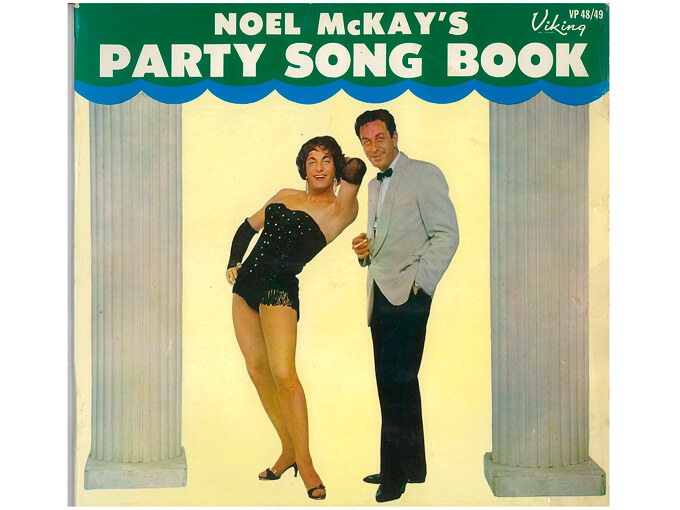
In 1977, McKay made national headlines when he refused to accept a Variety Artists Club lifetime achievement award from the Prime Minister, Robert Muldoon. At the awards dinner at the Shoreline Cabaret, the spotlight was turned on McKay when his award was announced. McKay was escorted to the stage and the beaming Muldoon, who was a big fan of show business when he wasn’t running the country with a dictatorial iron fist. (Muldoon would later appear in The Rocky Horror Show as the narrator, wearing a suit and fishnet stockings.) On that night at the Shoreline Cabaret, Muldoon reached out to McKay to shake hands and present the award. McKay stunned the audience by saying, “No thank you, sir, I do not wish to accept it.”
Turning to the audience, McKay said, “After 40 years in show business both here and overseas, I deserve more than a piece of paper. I am not coveting anyone else’s award, believe me, but I believe this scrap of paper is an insult. I have given a lot to the industry and this country and I would rather have had something relating to my work and my professionalism or nothing at all.” And with that McKay left the stage, leaving Muldoon somewhat bewildered.
In the new book Funny As: The History of New Zealand Comedy by Paul Horan and Philip Matthews, McKay is lauded for being a pioneer as a female impersonator. McKay helped bring blue cabaret — adult humour with a sting — to New Zealand. He used his skill and wit not only on stage, but in his six hugely successful LP records. In 1967, Marbecks sold 200 of McKay’s biggest LP, Bold ‘n Blue, in one week. As the authors of Funny As wrote, his saucy original songs were a feature of his nightclub act and left little to the imagination — but without attracting the attention of the police. They also note McKay’s impact on the young Hamilton hairdresser Richard O’Brien, who would go on to write the global hit musical The Rocky Horror Show. O’Brien remembered seeing McKay perform at the Embassy Theatre in Hamilton, which inspired him to give star billing to Frank-N-Furter, his lead character in drag.
Inthe 1980s, with the help of global icons like Barry Humphries’ Dame Edna Everage, drag would become mainstream. But by then, sadly, McKay was in his 60s and bitter. He’d tell anyone who’d listen that he felt New Zealand entertainment had not raised itself above the trash and the jug of beer. He told the Auckland Star many young people and entertainers were superficially copying undesirable overseas trends, couldn’t separate the authentic from the trash, and had never learnt to appreciate good live entertainment in high-class nightspots because there were so few of them in New Zealand.
McKay had also started to put on weight, his flexibility had gone and the bookings were slim. Without companionship (Tess had died), he became a sad figure, spending hours in his Gold Coast apartment playing the LPs that had sparked his life and career. He drank and wandered the streets until he died in his 90s.
The Auckland of today is full of nightclubs, bars and eateries. And Auckland is considered one of the safest places in the world for gay and transsexual men and women. Drag is more popular than it’s ever been, thanks to RuPaul’s Drag Race and the endless cycle of touring shows it has spawned. I hope Noel McKay somehow sees this, and approves.
This piece originally appeared in the September-October 2019 issue of Metro magazine, with the headline “Auckland’s first drag star: The fabulous Noel McKay”

